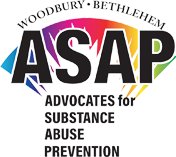STRATEGIES TO HELP ADDRESS ALCOHOL IMPAIRED DRIVING
- Alcohol impaired driving laws make it illegal to drive with a BAC at or above a specified level (0.05% or 0.08%). For people under 21, zero tolerance laws make it illegal to drive with any measurable amount of alcohol in their systems. These laws, along with laws that maintain the minimum legal drinking age at 21 are in place in all 50 states and DC and have saved tens of thousands of lives.
- Publicized sobriety checkpoints allow police to briefly stop vehicles at specific, highly visible locations to check drivers for impairment. Police may stop all or a certain portion of drivers. Sobriety checkpoints should be well publicized (e.g., through mass media campaigns) and conducted regularly for greatest impact.
- High-visibility saturation patrols consist of a large number of police patrollinga specific area, usually at times and locations where alcohol-impaired drivingcrashes are more common. Like sobriety checkpoints, these patrols should be well publicized and conducted regularly.
- Ignition interlocks for all, including first-time, convicted offenders can be installed in vehicles to measure alcohol on drivers’ breath. Interlocks keep vehicles from starting if drivers have a BAC above a certain level, usually 0.02%. Interlocks are highly effective at preventing repeat offenses while installed. Incorporatingalcohol problem assessment and treatment into interlock programs shows promise in reducing repeat offenses once interlocks are removed.
- Alcohol problem assessment and treatment programs can be used for those arrested for alcohol-impaired driving. Treatment is most effective when combined with other sanctions and when offenders are closely monitored. Assessment and treatment are critical to the success of DWI courts, which are specialized courts focused on changing the behavior of alcohol-impaired driving offenders.
- Alcohol screening and brief interventions take advantage of “teachable moments” and can be delivered in health care, university, and other settings to identify people at risk for alcohol problems and get them treatment as needed.
- Multi-component interventions combine several programs or policies to prevent alcohol-impaired driving. The key to these comprehensive efforts iscommunity mobilization, which involves coalitions or task forces in design and implementation.
- School-based instructional programs are effective at teaching teens not to ride with alcohol-impaired drivers.
Strategies to Help Address Drug Impaired Driving
Short-Term High-Visibility Enforcement of Impaired Driving Laws
Short-term high-visibility enforcement (HVE) of impaired driving laws involves a brief period of increased police efforts, including sobriety checkpoints or saturation patrols (an increased number of of cers patrolling a specific area). An effective HVE approach combines law enforcement with paid and earned media to increase awareness of the effort.2
Drug Recognition Experts (DREs)
These are law enforcement officers trained to identify drug-impaired driving using a 12-step, standardized evaluation that includes behavioral tests and physical assessments. The DRE evaluation includes breath alcohol testing, eye exams, muscle tone exams, tests such as the One Leg Stand, and other behavioral and physical observations. Blood or urine samples are collected and analyzed if there is suf cient evidence that a driver is impaired by a drug other than or in addition to alcohol.4,5
*Source: The Guide to Community Preventive Services (The Community Guide), Motor Vehicle-Related Injury Prevention, and National Highway Traf c Safety Administration (2018) Countermeasures that work: a highway safety countermeasures guide for State Highway Safety Of ces, Ninth edition, at www.nhtsa.gov/sites/nhtsa.dot.gov/ les/documents/812478_countermeasures-that-work-a-highway-safety-countermeasures-guide-.pdf
2 Richard, C. M., Magee, K., Bacon-Abdelmoteleb, P., & Brown, J. L. (2018, April). Countermeasures that work: A highway safety countermeasure guide for State Highway Safety Of ces, Ninth edition (Report No. DOT HS 812 478), Washington, DC: National Highway Traf c Safety Administration.
4 Hedlund, J. (2017, April). Drug-Impaired Driving: A guide for what states can do (Rep)
5 International Association of Chiefs of Police. (2019). The 12-Step DRE Protocol.
